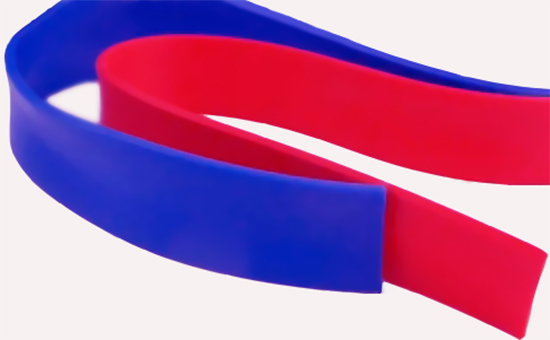
High elasticity is an important feature of rubber, and the elasticity of rubber is generally expressed by rebound rate. When using reclaimed rubber to produce high elastic rubber products, reclaimed rubber, vulcanization system, filler system and softening and plasticizing system will all affect the elasticity of reclaimed rubber products. Vulcanization is a process in which the rubber compound forms a three-dimensional network structure through intermolecular cross-linking of the raw rubber. The vulcanization system directly affects the finished product performance of the reclaimed rubber. So how does the vulcanization system affect the elasticity of reclaimed rubber products? How to improve the elasticity of reclaimed rubber products?
1. Vulcanization crosslinking density affects the elasticity of reclaimed rubber products
When using reclaimed rubber to produce rubber products, as the crosslinking density increases, the elasticity of the vulcanizate will continue to increase to a certain peak and then begin to decline. This is because in the absence of cross-linking, the rubber molecular chains are prone to relative sliding among the molecular chains under the action of the force field, resulting in irreversible deformation and poor elasticity; moderate cross-linking of the reclaimed rubber molecular chains can reduce or eliminate the inter-molecular chains. The slippage of each other improves the elasticity of the reclaimed rubber; excessive cross-linking will hinder the activity of the molecular chain and reduce the elasticity.
Therefore, to improve the elasticity of reclaimed rubber products, rubber product manufacturers can appropriately increase the amount of vulcanizing agent and accelerator, and then increase the degree of vulcanization of reclaimed rubber, and finally achieve the purpose of improving elasticity.
2. The type of vulcanized crosslinks affects the elasticity of reclaimed rubber products
The type of vulcanized crosslinks also affects the elasticity of reclaimed rubber products. The polysulfide bond energy is small, easy to decompose, has less binding force to the movement of molecular segments, and relaxes quickly, which can endow the reclaimed rubber products with better elasticity. When improving the elasticity of reclaimed rubber 2ELYY62 products, it is recommended to use sulfur-sulfenamide accelerators or sulfur-guanidine accelerators for vulcanization. Both thiazole accelerators and sulfenamide accelerators can give the rubber compound good elasticity.
In actual production, different types of reclaimed rubber products have different effects on elasticity by the type of vulcanized crosslinks.
When natural rubber is combined with reclaimed rubber such as latex reclaimed rubber and tire reclaimed rubber to produce rubber products, the vulcanizate using the semi-effective vulcanization system has better elasticity, followed by the ordinary sulfur vulcanization system, the effective vulcanization system and the balanced vulcanization system. Appropriate use of co-crosslinking agent Si-69 in the vulcanization system will increase the crosslinking density of the reclaimed rubber vulcanizate, and the elasticity of the reclaimed rubber product will be better. For nitrile rubber/nitrile reclaimed rubber products, the elasticity of the rubber after vulcanization of the DCP sulfur-free vulcanization system is better.
When using reclaimed rubber to produce highly elastic rubber products, rubber product manufacturers must choose a suitable vulcanization system according to actual needs. Later, Xiaobian will continue to share with you how to improve the performance of reclaimed rubber products by adjusting the reinforcing filling system and softening and plasticizing system. elasticity.
Exclusive original article [commercial authorization] reprint, excerpt and excerpt in any form are prohibited without written authorization. Focus on Hongyun rubber: learn the process formula and raw material technology of producing rubber products from recycled rubber to help you reduce costs and increase profits